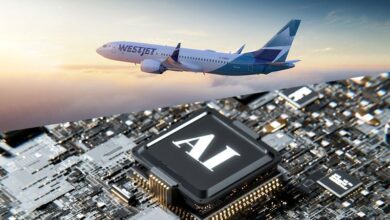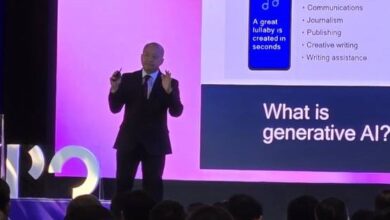What role could generative AI play within tomorrow’s smart city?

In the popular Halo franchise, the protagonist relies on a personal AI companion to provide information, make recommendations, and even execute tasks. What was once thought to be science fiction may soon be a reality in tomorrow’s smart cities, thanks to generative AI.
“Now, a large part of the focus will be on generative AI,” says James Tan, Director of the Smart City Division of JTC Corporation, a statutory board that oversees sustainable industrial development in Singapore. To GovInsider, Tan wonders out loud if the time will come where JTC will need to develop personal AI applications to support facility managers and residents.
The agency is considering integrating generative AI within the Open Digital Platform (ODP), a plug-and-play smart city operating system that will power the Punggol Digital District, which opens this year.
“The next phase will go a lot more into personal touchpoints. Through the use of AI and data analytics, we want to deliver personalised services,” he says. For example, an AI assistant could provide customised recommendations on where to go, what to do, and where to park, he explains.
Right now, traditional AI systems within the ODP can draw on sensor data to manage temperature levels while meeting energy efficiency targets, optimising lift systems, and managing energy supply.
Such AI “intuitively know[s] to lower the indoor temperature when a meeting room is fully occupied,” said Alan Tan, systems team lead at JTC previously. Since November 2022, the agency has also been trialling an AI-powered smart inspection system which can automatically identify and report road defects to facility managers.
Supporting facility managers with personalised chatbots
Soon, facility managers may be able to “ask” the platform questions through a “ChatGPT-style” large language model (LLM) within the ODP’s digital twin system, he suggests.
ODP’s digital twin represents data collected from live sensors as an exact 3D replica of the physical world – which facility managers can use to draw real-time, useful insights. In turn, this enables them to perform predictive maintenance and simulate future scenarios.
When an LLM is integrated within the digital twin, facility managers will no longer need to “navigate through a whole series of user interfaces,” explains Tan. Instead, managers can just “ask the platform” which lift might need servicing, the probability of a lift breakdown or which contracts may need renewal.
“You just have to talk to the AI. The AI can apply for your leave, book the meeting room, draft something for you, and improve your workflow,” he said.
In the long run, government agencies could even look into building personal AI assistants which could help citizens file taxes, apply for housing, and get carpark coupons, he says.
One such project is currently underway in Estonia – the country’s Bürokratt is an AI-powered virtual assistant that citizens can use to access digital services.
AI within the built environment
Architects and designers are already using generative AI to design buildings, validate structural choices, and ensure buildings are resistant to earthquakes, typhoons, and other natural hazards.
Looking ahead, AI could help designers detect structural issues and ensure designs conform to building code, he shares.
AI can also help estate managers project the structural integrity of buildings in the long-run.
“Can these buildings last 500 years? 1,000 years?” he asks. As sustainability becomes a more important consideration for leaders, buildings that can last longer may become a crucial way in which estate managers can reduce their carbon footprint.
Once buildings are up and running, facility managers can use AI to make data-driven decisions, optimise resource use, and personalise experiences for occupants. With JTC’s digital twin of the Punggol Digital District, estate planners can run simulations of future developments, draw on historical data to inform construction decisions, and test new processes, such as the introduction of autonomous vehicles.
This is part of JTC’s goal of creating a district known for its smart ecosystem, says Tan, where estate managers can deploy smart services, data, and predictive analytics to improve residents’ and commuters’ daily lives.
Managing AI risks
But even as AI opens the door for convenience and new services, it also comes with its own risks to watch out for – from AI hallucinations to high energy consumption.
First, Tan shares that it is important to educate staff, manage change wisely, and mitigate fears that AI will take away jobs. By linking LLMs to various systems with APIs, AI could be tasked to handle tedious office tasks, like procurement, document asset management, and form submissions, he notes.
Next, tech leaders need to watch out for the governance and security of AI technologies. One way to do this is to ensure that AI systems are trained with officially sanctioned datasets to lower the risks of AI hallucinations. Users should also be kept in the loop on what the AI has been trained on.
Traditional cybersecurity also plays a role in maintaining the integrity of AI systems from malicious actors. The agency plans to adhere to IMDA’s upcoming Model AI Governance Framework for Generative AI, and have put in place a risk matrix to assess and mitigate the potential impact of compromised systems, adds Tan.
Finally, leaders should account for the energy and water use before beginning on an AI project. When deployed at scale, AI can optimise districts and buildings’ energy consumption and minimise overall energy consumption – but if deployed only in limited settings, the energy savings may not even cover the servers that power the AI, he says.



